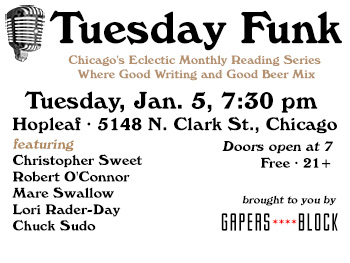| « Upcoming Open Books Holiday Auction | All I Want for Xmas Is... » |
Book Club Tue Nov 25 2008
January 2009 Selection: A Raisin in the Sun by Lorraine Hansberry
How much of a difference can $10,000 make? For the Younger family, $10,000 will give them the chance to change everything. When the patriarch of the family passes away, Lena, his wife, Walter Lee and Ruth, their son and daughter-in-law, Beneatha, or Bennie, their daughter, and Travis, their grandson, eagerly await the life insurance check that they are certain will alter the course of their working class lives. Set inside a small apartment in the impoverished South Side Chicago neighborhood of Woodlawn, this 1959 play evokes the feelings of desperation, oppression, hope and opportunity that consume each member of the family and their own particular wishes for the insurance money.
The $10,000 offers the chance for each of them to do something great. For Bennie, it is the chance to pay for medical school. Never satisfied with the idea of marrying rich, Bennie is set upon making something of herself through hard work and education. For Walter, it is the chance to make the business investment he is sure will take care of him for life. He dreams of being able to leave his job as a chauffeur, a servant, and provide a good home and luxuries to his wife and son. For Ruth, it is the hope that she will be able to care for her son and the new baby growing inside her. The tension has been thick between Ruth and Walter and she begins to contemplate drastic measures to maintain what they already have. For Lena, this money is not only the chance to purchase something to better their lives - for she is the only one who successfully acts upon the money - but the chance to move her family up on the social ladder, to finally be able to show something for all the hard years they've worked. It is the chance to, for once, move past the racial boundaries that have kept them immobile for so long. Though hasty decisions and poor judgment prevent these other dreams from coming to fruition, it is Lena's dream that the family is able to rally around and defend and make a reality, even when others try their best to knock it down.
A Raisin in the Sun was the first play written by a black woman and directed by a black man to be produced on Broadway. The original cast included Sidney Poitier as Walter Lee Younger, Ruby Dee as Ruth Younger and Louis Gossett, Jr., as George Murchison, one of Bennie's potential suitors. The play made Lorraine Hansberry the first black person to be awarded the New York Drama Critics' Circle Award. In 1961, a film version of the play was released featuring the Broadway cast and several different film versions have been released since then, most recently starring Sean Combs and Phylicia Rashad. The play is loosely based on author Hansberry's family's own dealings with racial discrimination and segregation in Chicago. In the spring of 2003, A Raisin in the Sun was selected to be part of the Chicago Public Library's One Book, One Chicago program.










Michael Marsh / December 4, 2008 8:39 PM
Shortly before Lorraine Hansberry’s play A Raisin in the Sun opened on Broadway in 1959, she described it in a letter to her mother. Hansberry claimed the play told the truth about blacks.
Many people agreed. The play is generally acknowledged as a classic.
Yet the play is a poor choice because the plot lacks credibility. [Comment edited to remove plot spoilers.] The ending is supposed to be uplifting, but seems unrealistic. No one would trust a person like Walter. He demonstrates poor judgment, disobeys his mother, and ignores the needs of his sister. It’s hard to sympathize with such a distasteful character.
Furthermore, the play’s idea of black progress is anachronistic. Hansberry used the purchase of a house in a white neighborhood to symbolize upward mobility. But African Americans had already achieved even greater progress by making strides in politics, medicine, business and other fields. When the play debuted, it was already behind the times.
Given the poor plot, A Raisin in the Sun does not merit continued reading.
Michael Marsh